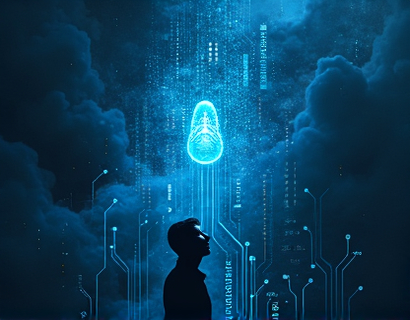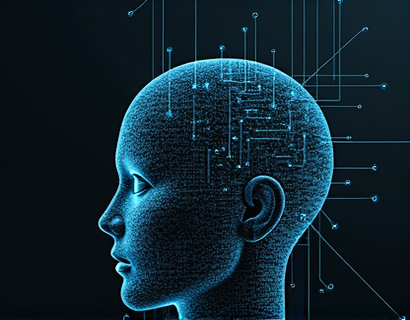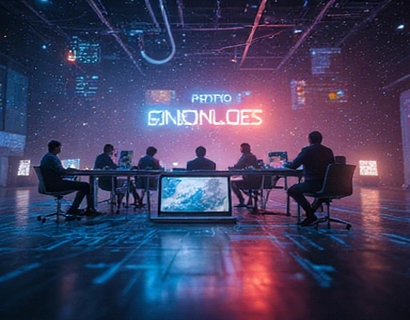Interactive Cosmic Learning: Personalized Exploration with AI-Powered Guidance
In an era where technology and education intersect, the concept of personalized learning has transformed the way we approach complex subjects like astronomy and space exploration. This article delves into the realm of interactive cosmic learning, where AI-powered tools offer a tailored experience for educators and space enthusiasts alike. By leveraging advanced algorithms and user-friendly interfaces, these platforms unlock a universe of knowledge, making the vastness of space accessible, engaging, and customizable to individual learning paths.
The Role of AI in Personalized Cosmic Education
AI technology plays a pivotal role in creating personalized learning experiences in the field of astronomy. By analyzing user preferences, learning pace, and interaction patterns, AI-driven tools can adapt content in real-time to suit each individual's needs. This dynamic approach ensures that learners, whether they are beginners or advanced enthusiasts, receive information that is both challenging and comprehensible, fostering a deeper understanding of cosmic phenomena.
Customizable Learning Environments
One of the most significant advantages of AI-powered cosmic learning tools is the ability to customize the learning environment. Users can adjust settings to focus on specific areas of interest, such as planetary science, astrophysics, or space history. This flexibility allows educators to design curricula that align with their teaching objectives, while enthusiasts can explore topics that ignite their curiosity. The customization options extend to the level of detail, from basic概念sto advanced theoretical discussions, ensuring a scalable learning experience.
Interactive Explorations of the Universe
Interactive explorations are at the heart of this innovative learning platform. Through immersive simulations and virtual tours, users can embark on virtual journeys through the cosmos. These interactive experiences are not just visual; they are designed to engage multiple senses and cognitive processes. For instance, users can manipulate 3D models of celestial bodies, observe real-time astronomical events, and participate in guided tours led by AI narrators. This hands-on approach enhances retention and fosters a deeper connection with the subject matter.
Personalized Guides and AI Chat Agents
Central to these platforms are AI chat agents that serve as personalized guides. These agents use natural language processing to understand user queries and provide relevant information on the fly. Whether a user asks about the composition of a particular star or the history of a specific space mission, the AI chat agent delivers accurate and concise answers. This interactive dialogue not only answers immediate questions but also encourages further exploration and learning.
User Permission Setups
To ensure a safe and tailored learning experience, these platforms offer customizable permission settings. Users can control the type and depth of content they receive, as well as the level of interaction with the AI chat agent. For example, a user might choose to receive basic overviews of topics, while another might opt for in-depth analyses. These settings can be adjusted at any time, allowing learners to evolve their experience as their knowledge and interests grow.
Engaging Learning Experiences
The combination of interactive elements and AI-driven guidance creates highly engaging learning experiences. Traditional methods of learning astronomy often involve static textbooks and lectures, which can be dry and uninspiring. In contrast, AI-powered tools transform the learning process into an adventure. Users can participate in quizzes, solve puzzles related to cosmic phenomena, and engage in discussions with other learners. This gamification of learning not only makes the process more enjoyable but also more effective.
Accessibility and Inclusivity
One of the most compelling aspects of these platforms is their commitment to accessibility and inclusivity. By providing content in multiple languages and formats, these tools break down barriers that might otherwise prevent individuals from exploring the universe. Visual, auditory, and kinesthetic learners all find value in the diverse presentation methods used. Additionally, the platforms are designed to be user-friendly, ensuring that people of all technical backgrounds can navigate and benefit from the resources offered.
Educational Applications for Teachers
For educators, these AI-powered cosmic learning tools offer a wealth of opportunities. Teachers can integrate these platforms into their curricula to supplement traditional teaching methods. The customizable nature of the content allows for alignment with educational standards and learning objectives. Moreover, the AI chat agents can serve as virtual assistants, providing additional support and answering student questions outside of regular class hours. This not only enhances the learning experience but also helps teachers manage their time more effectively.
Enhancing Student Engagement
Student engagement is a critical factor in educational success, and AI-driven cosmic learning tools excel in this area. The interactive and personalized nature of these platforms captivates students' attention and motivates them to learn. By making complex concepts more relatable and fun, these tools help overcome the common challenge of maintaining interest in science subjects. Teachers can observe increased participation and enthusiasm in their classrooms, leading to better learning outcomes.
Real-World Applications and Future Prospects
The applications of AI-powered cosmic learning extend beyond the classroom. Amateur astronomers, space enthusiasts, and even professionals in the field can benefit from these tools. For instance, hobbyists can use the platforms to plan observing sessions, learn about upcoming celestial events, and deepen their understanding of astronomical phenomena. As technology advances, the potential for these tools to integrate with real-time data from space missions and telescopes will only increase, providing even more accurate and up-to-date information.
Challenges and Considerations
While the benefits are numerous, there are also challenges to consider. Ensuring the accuracy and reliability of the information provided by AI chat agents is paramount. Continuous updates and rigorous testing are necessary to maintain high standards. Additionally, there is a need to balance automation with human oversight to address complex or nuanced questions that AI might not handle perfectly. Privacy and data security are also critical, as user data must be protected and used ethically.
Conclusion
Interactive cosmic learning powered by AI represents a significant leap forward in educational technology. By offering personalized, engaging, and accessible experiences, these platforms democratize the exploration of the universe. For educators, they provide valuable tools to enhance teaching, and for enthusiasts, they open doors to a deeper understanding of the cosmos. As this technology continues to evolve, the future of cosmic education looks brighter and more exciting than ever.










































